“Pinterest is not a social network. Really. It’s not about your friends! The last thing I need is another messaging app, y’know?” says Evan Sharp, thumping his fist on the table for emphasis. “It’s really this different kind of unique thing.”
Sharp should know: he co-founded it. And since its launch in 2009, Pinterest has reached a large audience – 47.1 million active users in the US alone this year according to eMarketer – raising a startling $764m of funding along the way.
So what is it, if not a social network? Many people who aren’t on Pinterest have a hazy idea that it is something to do with online mood boards for planning weddings and house redecorations, used mainly by women.
The company is keen to scotch those perceptions: men are its fastest-growing demographic, and it’s being used for a lot more than ogling wedding dresses and furniture (although, yes, those too).
“It’s really this great tool for discovering creative ideas and saving them for later,” is how Sharp boils it down, sitting down with the Guardian as part of a visit to the UK, where Pinterest usage has, he claims, more than doubled in the last year as the company’s local team grows.
“Part of the reason I’m on this trip is to try to understand how is this working here. Does Pinterest in the UK feel like an American service ported over, or does it feel authentically British?” says Sharp, a self-confessed anglophile.
“A lot of that goes back to who do we feature, who do we connect you to when you sign up, who’s driving the tastes on our platform in Britain, and who are the sources of the stuff that people are saving and discovering?”
Getting more Brits using the service is a big part of that process: hence Sharp’s desire to explain exactly what Pinterest is (and what it’s not) and how people are using it.
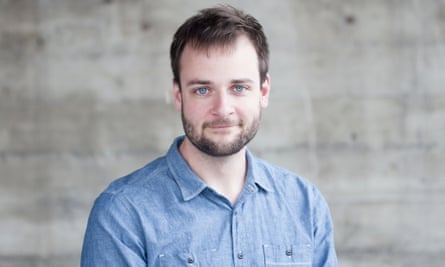
‘Pins are things’
That includes emphasising that Pinterest is much more than an image-focused digital mood board in 2015, in terms of the more than 30bn “pins” – from products and fashion to apps and music videos – that its users have created and shared.
“We like to say pins are things. Hopefully they’re not just images: there’s a link behind them, and that small difference makes a world of difference in terms of usefulness and utility,” says Sharp.
“We’re very recommendations and search-focused. It’s a service that should become more valuable the more you use it, and more specific to your taste or your interests.”
Pinterest as a search engine rather than a social network? “People don’t think of Pinterest as search, necessarily, and that’s partly the design of the service: the way it’s laid out, but we’re a huge search engine. A massive search engine, and it’s very different type of search to Google or Yahoo,” he says.
How? Sharp suggests that while Google is good at answering specific “objective” questions like how far it is from one place to another, it struggles at more subjective questions like what sofa to buy or what to cook for dinner. “Those are harder, more subjective things to get through a [traditional] search engine.”
Like many other internet services, Pinterest is increasingly driven by mobile, with 80% of its usage coming from smartphones and tablets, and Android and iPhone its lead platforms for almost all new features.
“There’s a fundamentally different mindset on the phone. It’s partly about the user interface, the inputs that come with the phone, and it’s partly the fact that phones are about apps not websites, and the way you refer traffic is very different,” says Sharp.
“We’re in the middle of that transition. In the next five years, so many people are going to come online in the world who’ve never had a smartphone before. It’s a fascinating time.”
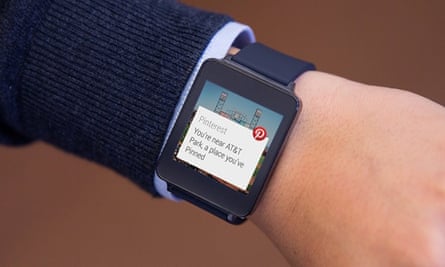
Pinterest on the wrist
There’s another mobile device on Pinterest’s agenda: the smartwatch. The company started supporting Android Wear devices in June 2014, with an app that alerts people on their smartwatches when they’re near a place that they’ve pinned. Pinterest is also a launch partner for the upcoming Apple Watch.
Sharp describes the geo-location feature as “interesting, but a bit of a distraction”, suggesting that Pinterest sees smartwatches as a way to be more useful in day-to-day life.
“One of our company goals is to get you offline, unlike a social network. We’re not just about engagement and time spent. We aspire to be more about helping you with your life and getting you offline and doing things,” he says.
“What’s great about the watch is that it will be with you when you’re doing things … you can imagine, you’d be cooking a recipe, and rather than having to pull it [your smartphone] out, just seeing it quickly on your wrist.”
Pinterest is also working hard on its advertising strategy for “promoted pins”, which was first announced in September 2013, then tested with a few US advertisers from May 2014, and finally opened up to all brands in that country in January 2015.
Inserting ads into people’s Pinterest feeds hasn’t led to a backlash so far, which Sharp sees as proof that the company’s softly-softly approach has worked.
“They’re not really even ads. If you show someone a version of the homefeed without the promoted pins label, and one with it, people might be hard-pressed to pick out which one is an ad,” he says.
“It just gets back to the nature of Pinterest: brands happen to create a decent percentage of the stuff you find, and as long as we keep the format native to the experience, and as long as the type of content feels relevant... It’s not a service about your friends, so brand stuff doesn’t feel like a jarring disconnect.”
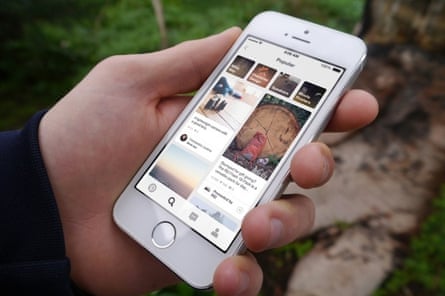
No eyeball-frying uglyfest
One of the creative challenges facing Pinterest in 2015 is the growing amount of gifs and videos being pinned, rather than just images. Boards are becoming animated rather than static.
“I think in the next few years we’ll see a kind of breaking down of the barriers that we have today between images and video and gifs. Motion can be incredibly compelling: this real cinematic narrative story through video. Or it can be very similar to an image, just with a bit more life behind it,” says Sharp.
“That Harry Potter thing where everything on the wall moves? That’s not far away! At least in a digital way. And it’s going to be better for everyone, I think.”
The idea of digital walls where everything moves doesn’t just bring Harry Potter to mind: it also sparks more troubling flashbacks to the worst, garish and flashing excesses of MySpace profile pages back in the day.
How does Pinterest avoid turning into a similar eyeball-frying uglyfest? “It has to be tasteful!” says Sharp. “One of my favourite things about Pinterest is that everything was put there by a human being – all 30-plus billion pins – and there is a level of quality to the things that tend to get popular.
“There are lots of flashing banner-ad style things: it’s not that this stuff isn’t on the internet. But that’s not what gets saved. What gets saved is useful or inspiring, and even better, a combination of the two. Done the right way, that sort of motion media points into this other world of possibilities that can be really positive for the experience.”
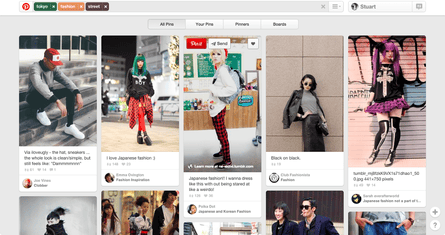
Connecting the curators
Curation can be an overused buzzword in the internet industry, but in Pinterest’s case, it really is at the heart of what the company does: encouraging people to create and collaborate on boards about their passions, and then tackling that Sharp admits is the “non-trivial” challenge of connecting people to those curators, so that Pinterest becomes more useful to them.
(In the streaming music world, Spotify is facing a similar challenge in helping people find new music that they’ll love by connecting them to curators – playlist creators – whose tastes chime with theirs.
“It’s really about trying to connect you to the right person. I mean, I’m going to come back to London in a few weeks, and figure out what I’m going to do in a three-day period. And that’s going to be me on Pinterest looking at the boards of London, for people who live here who’ve got great taste,” says Sharp.
“It’s about connecting to the right curator: about finding that person who’s got the same tastes as you, and has already done the work for you. But connecting you to that person is non-trivial [as a challenge]. We think about that a lot.”
This leads on to a discussion about the way the internet – from services like Pinterest, Tumblr and Instagram to street-fashion and coolhunting blogs – are vastly increasing the speed at which trends and culture zips across the world. Not just in terms of hipsters in Tokyo, Shoreditch or New York cribbing one another’s style, but also in reducing the time it takes trends to trickle down from those early adopters to everyone else: the mainstream.
“I do think hipster culture in particular comes out of the internet: it comes out of exposure to a generation of imagery and music and fashion and so hipster culture tends to be – from what I can tell – more international, more so than other movements,” says Sharp, addressing the first of those points.
“But there’s always a nuance. I was in Japan last year, and there was a hipster culture there but it’s definitely a Japanese hipster culture. And it’s the same thing here [in Shoreditch] as well, from what I can tell.”
Catching the hipsters
What about that second point, though: cultural trends hitting the mainstream faster than ever. If I follow the right people, blogs, boards and playlists, it certainly doesn’t make me the tastemaker, but it does – with a minimum of mediation – mean their recommendations reach me much faster.
“One of the beautiful things, hopefully, about the internet, is that it’s no longer as simple to generalise: ‘Oh, you’re a mod’ or you’re whatever it is, ‘a punk’. The movements are much more… maybe not even movements any more. Much more nuanced,” says Sharp.
“There hasn’t really been an art movement in, like, two decades, which I really think is the beautiful thing about the time. No one sees it yet or talks about it, but it is a new world. One of the big changes is this access, this exposure that Pinterest and other services give you to that world of culture.
“It allows people to more personally curate their own culture: their own food, their own fashion, their own travel… That idea of ‘developing taste’ in something sounds elitist to me, almost. It’s this process of being exposed to the possibilities and then deciding what your own preference is.”
How it fuels that process is, I think, a much more interesting question about Pinterest than “will it start making money?” (yes) or “will it get bought by Google or Apple?” (quite possibly, yes).
It’s certainly more than a glorified scrapbook. Or, indeed, just another social network.
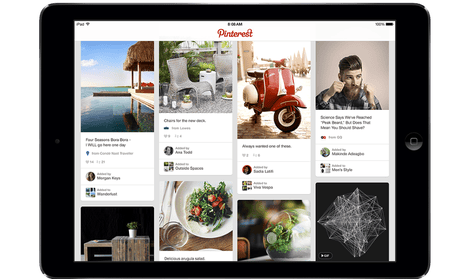
Comments (…)
Sign in or create your Guardian account to join the discussion